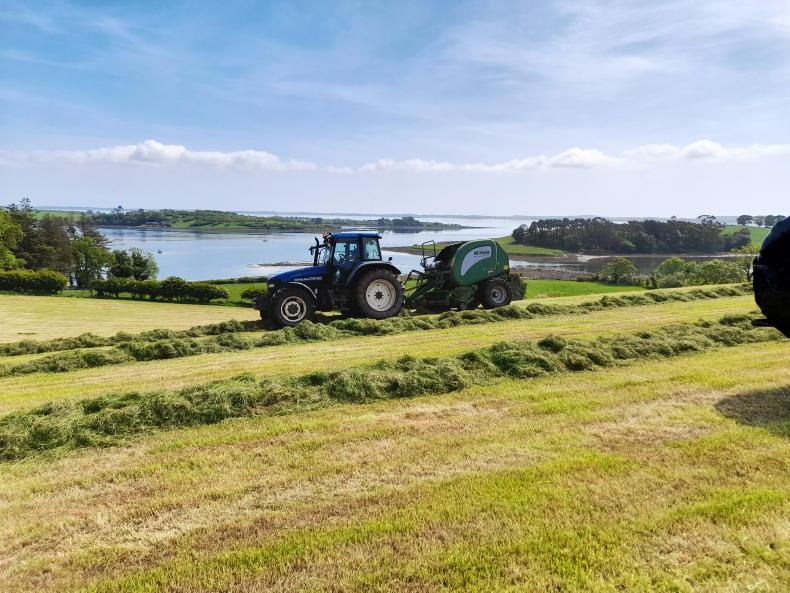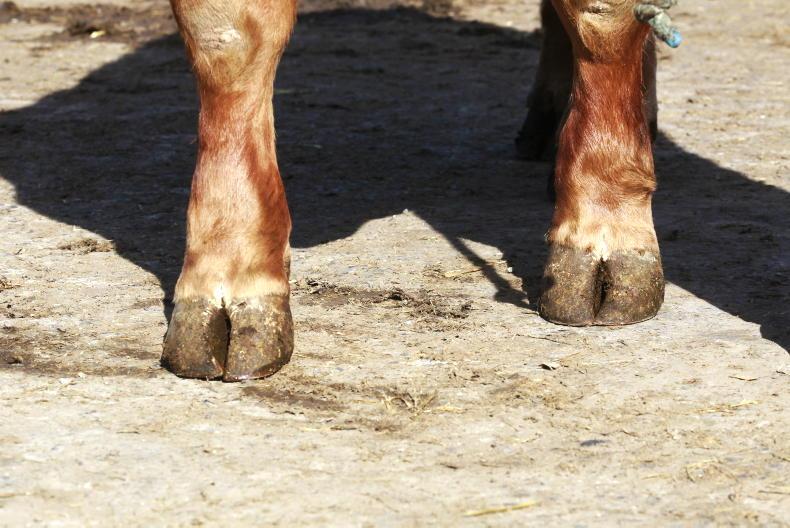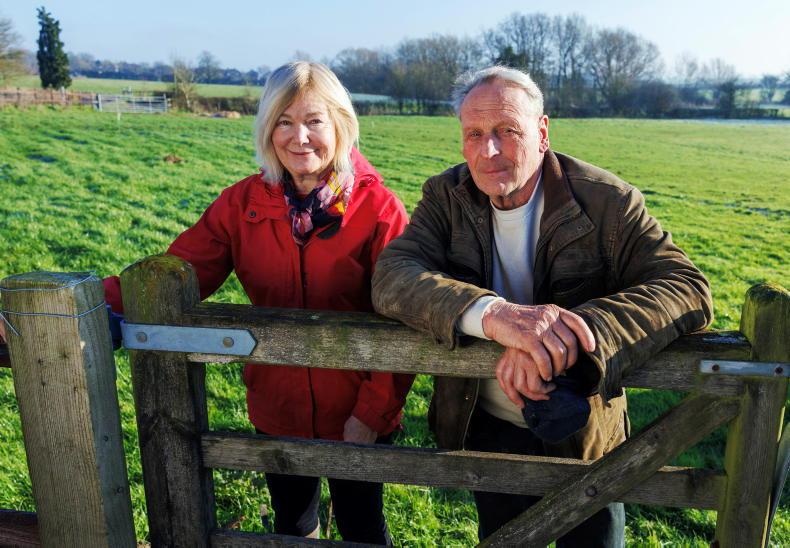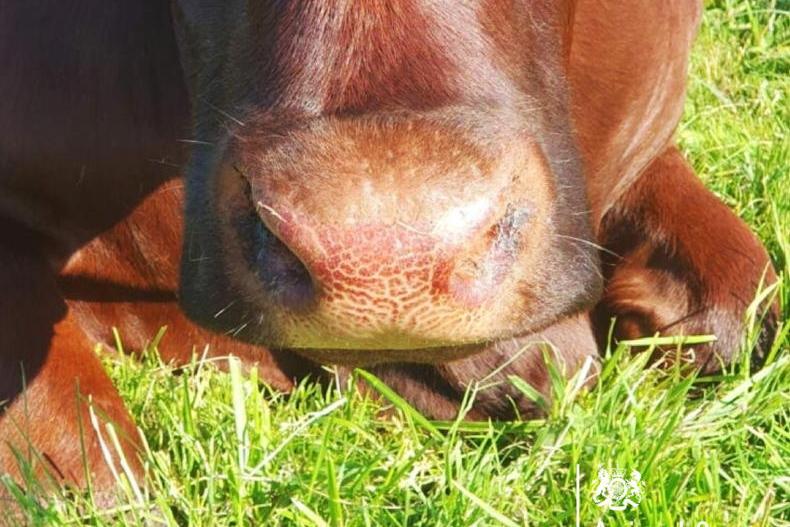After a prolonged spell of dry and sunny weather that saw most of us making silage in ideal conditions, I began to anxiously scan Met Office forecasts for signs that much needed rain might be on the way.
And luckily, we got a full inch and a half in the middle of June to ease those worries and enable us to reset our plans for July grazing. I’m sure quite a few other farmers and growers were, like me, doing the old, ‘what if?’ thing in their heads, and cursing themselves for not having a more robust contingency strategy in place.
When the rain comes after a drought, one of my favourite smells is that warm earthy aroma that rises from concrete, stone yards and baked areas. I remarked about this to my elder sister one evening, and wondered aloud if there was a word to describe it. “There is”, she assured me, “It’s called petrichor”.
I’d never heard of the word so, being a tad suspicious, I looked it up in the dictionary and, sure enough, petrichor is the exact terminology to describe that wonderful smell. You live and learn, don’t you?
Cut grass
Silage-making began on 24 May with grass that hadn’t been grazed since January, then moved on to swards that the ewes and lambs had run over in April, finishing (just before the rain) in the middle of June with a field that had got ahead of the sheep.
None of it was an enormous crop: partly because I don’t sow heavy amounts of fertiliser, and partly because some of my fields are older swards and sowing 90 units of nitrogen on them is counterproductive and a waste of money.
In my experience, swards with a dense bottom tend to go off their feet when bulk exceeds about seven bales per acre, although I have younger reseeds that are still behaving more like what I refer to as a dairy cow grass.
Do existing varieties change their growth pattern after years of sheep nibbling, or do those more open, erect grasses die out? Either way, I have learned to tailor my fertiliser applications and yield expectation according to the type and age of the individual area.
Yields started off at 10 bales per acre, dropped to nine, then fell further to six and finally tailed off at less than five for a field that was little more than heavy toppings.
I think I have just about enough to see me through the winter, although I might cut one field again, just to have some silage in reserve.
Luxury
I am struggling to remember a year that could surpass this one for making silage on the day of your choosing, with the luxury of not caring whether the baler man was coming that evening, the next morning, or indeed the following day.
For someone like me who has a master’s degree in panicking and indecisiveness, it is satisfying beyond belief to cut one field at a time on the exact day that it is deemed ready. Then to take into it with the tedder, safe in the knowledge that no rain is forecast all week, further enhances the reassurance. For this phenomenon to continue across the entire silage area may well be unprecedented on this farm.
Ideal
So, now it must be time to put my money where my mouth is. I am categorically stating that all my grass was baled at an ideal growth stage, and a dry matter that was deemed perfect for my requirements was achieved.
Therefore, I am bound to nail my colours to the mast and predict a silage analysis for the winter ahead that will be as suitable for pregnant ewes and young dairy heifers as I am ever likely to want. Fingers crossed then.
Read more
Planning ahead for the dairy heifers
Farmer Writes: nematodirus outbreak sends a wakeup call
After a prolonged spell of dry and sunny weather that saw most of us making silage in ideal conditions, I began to anxiously scan Met Office forecasts for signs that much needed rain might be on the way.
And luckily, we got a full inch and a half in the middle of June to ease those worries and enable us to reset our plans for July grazing. I’m sure quite a few other farmers and growers were, like me, doing the old, ‘what if?’ thing in their heads, and cursing themselves for not having a more robust contingency strategy in place.
When the rain comes after a drought, one of my favourite smells is that warm earthy aroma that rises from concrete, stone yards and baked areas. I remarked about this to my elder sister one evening, and wondered aloud if there was a word to describe it. “There is”, she assured me, “It’s called petrichor”.
I’d never heard of the word so, being a tad suspicious, I looked it up in the dictionary and, sure enough, petrichor is the exact terminology to describe that wonderful smell. You live and learn, don’t you?
Cut grass
Silage-making began on 24 May with grass that hadn’t been grazed since January, then moved on to swards that the ewes and lambs had run over in April, finishing (just before the rain) in the middle of June with a field that had got ahead of the sheep.
None of it was an enormous crop: partly because I don’t sow heavy amounts of fertiliser, and partly because some of my fields are older swards and sowing 90 units of nitrogen on them is counterproductive and a waste of money.
In my experience, swards with a dense bottom tend to go off their feet when bulk exceeds about seven bales per acre, although I have younger reseeds that are still behaving more like what I refer to as a dairy cow grass.
Do existing varieties change their growth pattern after years of sheep nibbling, or do those more open, erect grasses die out? Either way, I have learned to tailor my fertiliser applications and yield expectation according to the type and age of the individual area.
Yields started off at 10 bales per acre, dropped to nine, then fell further to six and finally tailed off at less than five for a field that was little more than heavy toppings.
I think I have just about enough to see me through the winter, although I might cut one field again, just to have some silage in reserve.
Luxury
I am struggling to remember a year that could surpass this one for making silage on the day of your choosing, with the luxury of not caring whether the baler man was coming that evening, the next morning, or indeed the following day.
For someone like me who has a master’s degree in panicking and indecisiveness, it is satisfying beyond belief to cut one field at a time on the exact day that it is deemed ready. Then to take into it with the tedder, safe in the knowledge that no rain is forecast all week, further enhances the reassurance. For this phenomenon to continue across the entire silage area may well be unprecedented on this farm.
Ideal
So, now it must be time to put my money where my mouth is. I am categorically stating that all my grass was baled at an ideal growth stage, and a dry matter that was deemed perfect for my requirements was achieved.
Therefore, I am bound to nail my colours to the mast and predict a silage analysis for the winter ahead that will be as suitable for pregnant ewes and young dairy heifers as I am ever likely to want. Fingers crossed then.
Read more
Planning ahead for the dairy heifers
Farmer Writes: nematodirus outbreak sends a wakeup call










SHARING OPTIONS